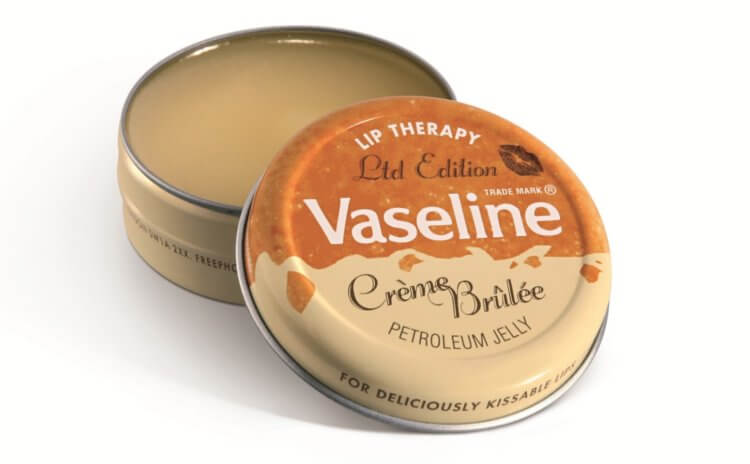Did you know that the inventor of Vaseline, Robert Chesebrough, believed that his product had healing properties? He not only treated wounds with it, but also regularly ate it. The man did all this in order to impress people and make them buy the “magic” cure for all diseases. One might think that Vaseline really had healing properties, because the wounds on the scientist’s body healed quickly. In addition, he lived to be 96 years old, which is a very good result for a person who lived in the mid-19th century. So what is it, we don’t know something about Vaseline? Is it really not just a substance that can moisturize the skin and protect it from damage, but something more?

The creator of Vaseline considered his invention healing, and tried to cure all diseases with it. Source: Reddit
Contents
- 1 Who invented Vaseline
- 2 What is Vaseline made from
- 3 Healing properties of Vaseline
- 4 What is Vaseline used for
Who invented Vaseline
Robert Chesbrough is an English chemist who is best known for inventing Vaseline. It all started in 1859, when he had a chance to visit oil production sites in the American state of Pennsylvania. While talking with workers, he learned that they use a substance called Rodvax to treat wounds and burns. At its core, it is a jelly-like substance that accumulates inside oil production equipment. According to workers, after application to the affected area, the unusual substance reduced pain and accelerated wound healing.

Robert Chesbrough – inventor of Vaseline. Source: dustyoldthing.com
What is Vaseline made of
The scientist became seriously interested in the substance and began conducting experiments. He ended up with a product called “Vaseline.” It comes from the German word wasser (water) and the Greek elaion (oil).
The main ingredient of Vaseline is petroleum jelly, which is obtained from petroleum by filtration. This jelly also contains wax which improves the texture of the product to make it easier to apply to the skin. Flavors and dyes are sometimes added to modern Vaseline so that it has a pleasant aroma and looks beautiful.

The composition of Vaseline is extremely simple, but nevertheless it is a universal remedy for many skin problems. Source: popup-parlour.com
It turns out that Vaseline is the same “Rodvax”, but significantly improved so that ordinary people want to buy and use it.
Read also:5 scientists who changed the world, which we rarely remember
The healing properties of Vaseline
Chemist Robert Chesbrough launched the commercial production of Vaseline in 1870. To demonstrate the healing properties of the product, he deliberately inflicted wounds on himself, burning his skin with fire or even acid. Then he applied Vaseline to the affected areas of the body and after a while showed that it significantly accelerated their healing. He also gave out free samples of Vaseline so people could try it out for themselves—in fact, he became the first person to use “samples” for advertising purposes.
But the fact that he wounded himself to demonstrate the properties of Vaseline is not the strangest thing. Robert Chesbrough believed in the healing properties of Vaseline so much that he took a spoonful of the substance every day. But it is important to note that you should not take Vaseline internally: not only will it not bring any benefit, it can also cause diarrhea and other health problems.

A still from the 2016 film “Vaseline: Wonder Jelly.”
At the age of 50, Robert Chesbrough experienced an exacerbation of pleurisy. This is the name for inflammation of the tissues that surround the lungs and line the inner surface of the chest. Symptoms of pleurisy include chest pain, as well as shortness of breath and cough. To cure himself, he asked a nurse to completely cover his body with Vaseline. He recovered and then said that all this was thanks to his remedy.
You will be interested:Because of this disease, people become wild and afraid of water, and medications for it destroy the body
What is Vaseline used for
In fact, Vaseline does not have any healing properties. It simply creates a protective layer on the skin that prevents dirt and bacteria from reaching damaged areas. This promotes rapid healing of wounds and also prevents infections.
Today, Vaseline is primarily used in skin care because it helps retain moisture and prevents the skin from drying out. Vaseline can be applied to the skin for cuts to prevent dirt from penetrating into the wounded area. Vaseline can also be used to moisturize your lips to prevent them from cracking.

Today, Vaseline can be bought at almost any pharmacy. Source: gettyimages.ae
In everyday life, you can coat metal tools and parts with Vaseline to prevent them from rusting. Sometimes it is used to lubricate door hinges, locks and other mechanisms – thanks to it they stop creaking. Another life hack: Vaseline softens the glue, so you can use it to remove stickers without leaving a trace.
Be sure to subscribe to our Zen channel. There's a lot of interesting things there!
Some people might be surprised to learn that Vaseline is made from petroleum. If you are one of them, be sure to read our article “10 Surprising Products Containing Petroleum Substances.” Perhaps we will surprise you a few more times!